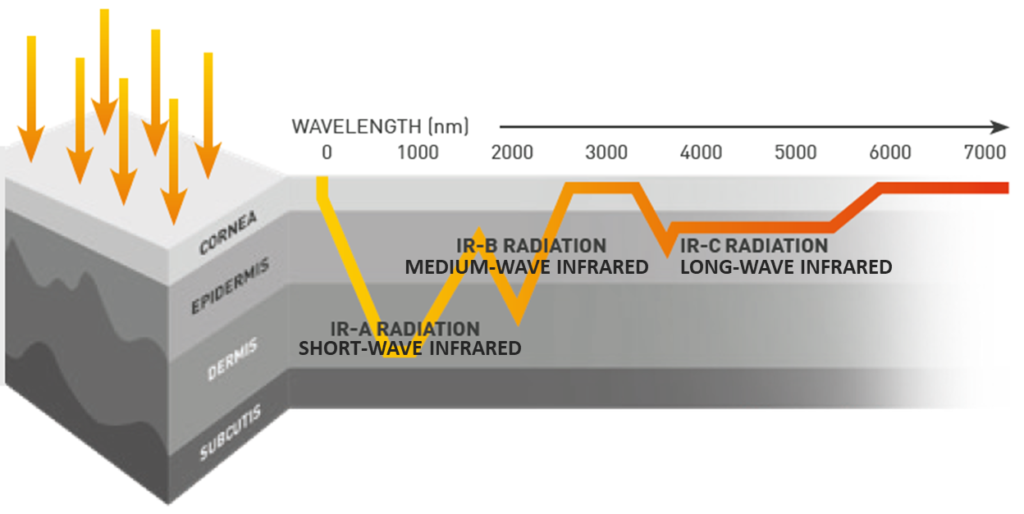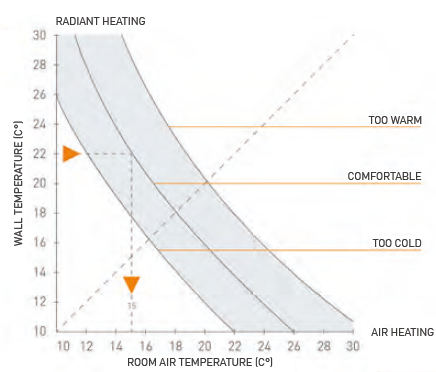Warmth that gets under your skin
Human beings emit ‘Far Infrared’ radiant heat naturally. It is the same form of heat that we feel when we are being warmed by the sun. It is completely natural and safe.
Our sense of comfort has evolved from the radiant heat we receive from the sun. Our bodies tell us to avoid the sun’s hottest waves, shortwave infrared. We feel most comfortable when the infrared waves are absorbed by objects around us and radiated back into the environment. This is known as medium and long-wave infrared and is exactly what we use to heat the different rooms and spaces within a school.

Long-wave infrared is what our skin and materials in our environment absorb and emit the most naturally. The direct warming effect of infrared benefits those age groups who feel the cold the most, namely the younger and older generations.
From a biological perspective, infrared is the most significant (60%) form of heat in our sense of comfort. Convection (movement of hot or cold air) represents only 15% of our feeling of comfort. Evaporation and conduction of heat from our bodies to our clothing or other objects accounts for the remaining 25%. Long-wave infrared is the wavelength that is absorbed most efficiently by the water in our skin.
For these reasons the 8-12 micron wavelength of the long-wave infrared is often referred to as the “Vital” range, because of its vital warming properties, of human comfort and biological significance. Champneys Spa, for example, uses long-wave infrared therapy rooms to ‘help to soothe and relieve stressed muscles’ stating ‘enhanced feelings of wellbeing, mood and energy levels can also be experienced.’
Infrared heat improves thermal comfort levels. This is because every part of the classroom is heated to an even level, removing cold spots and creating a more comfortable (non-stuffy) temperature. Unlike convection heating, there is minimal air movement (convection currents) that results in fewer drafts from ‘leaky’ doors and windows and a cleaner environment as less dust and pollutants are present. This is especially helpful for asthma and allergy sufferers, whatever their age.
Comfort diagram by Bedford & Liese
You may be interested in proof of the efficiency of infrared heating. An empirical investigation by Bedford and Liese demonstrated that people feel the same degree of comfort with warm walls even when the room’s air temperature drops.
The subjectively felt temperature is 2-3 degrees higher than the actual room temperature. The room’s air temperature can thus be reduced without affecting your sense of comfort. Every degree that the air temperature drops translates to a 6% energy saving. Thus, infrared heat can save you up to 18% in terms of energy.


